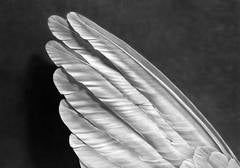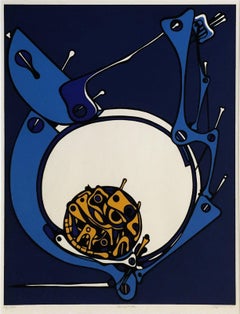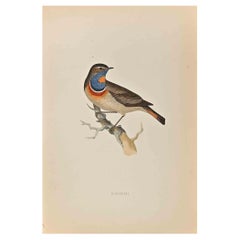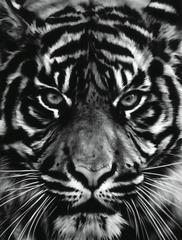Robert Longo Animal Prints
The drawings by artist Robert Longo are a sensory experience: They are monumental, detailed and hard-hitting in their subject matter, which often includes critiques of power, social unrest and consumer capitalism.
Longo has spent his career exploring mediums as varied as the Photorealistic charcoal drawings for which he is best known and film direction. In all of his work, however, he draws inspiration from his deep background in sculpture. “I always think that drawing is a sculptural process. I always feel like I’m carving the image out rather than painting the image. I’m carving it out with erasers and tools like that,” he once said.
The Long Island, New York, native attended high school with a man who was shot at Kent State University while protesting the U.S. invasion of Cambodia during the Vietnam War in 1970, and the famous image of this man lying dead on the ground influenced Longo so deeply that he began to consider all art political. Longo attended Buffalo State College, where he met and became friends with artist Cindy Sherman, and later the two moved to New York City together.
Longo’s revered work includes his charcoal and graphite “Men in the Cities” drawings. The Photorealist series, which debuted at Metro Pictures gallery in Manhattan in 1981, depicted people in formal business clothing. Posing in suspended animation in unusual contortions, the figures take on a choreographic quality and represent the career-minded “yuppies” of the era.
“Men in the Cities” was inspired by punk rock music and decades later has been cited as a visual reference for the opening sequence of the popular television drama Mad Men. The work was among the most recognizable and iconic of the Pictures Generation — the movement by artists who came of age in the 1970s and were disillusioned by the social and political conditions of the time. In 2014, Longo created 12 charcoal drawings for a series titled “Gang of Cosmos,” which were black-and-white depictions of famous Abstract Expressionist works by artists like Jackson Pollock, Willem de Kooning and Lee Krasner.
Through his provocative, detailed and highly precise prints, drawings, photography and sculpture, Longo continues to challenge traditional sources of power and authority.
Find original Robert Longo art on 1stDibs.
21st Century and Contemporary Robert Longo Animal Prints
Archival Pigment
1980s Contemporary Robert Longo Animal Prints
Lithograph, Paper
1870s Modern Robert Longo Animal Prints
Woodcut
1930s American Modern Robert Longo Animal Prints
Lithograph
1930s American Modern Robert Longo Animal Prints
Lithograph
Mid-20th Century Baroque Robert Longo Animal Prints
Paper, Printer's Ink
1980s Pop Art Robert Longo Animal Prints
Lithograph, Offset
2010s Robert Longo Animal Prints
Pastel, Pencil, Archival Pigment
2010s Street Art Robert Longo Animal Prints
Color, Digital, Giclée, Pigment, Archival Pigment, Carbon Pigment, Screen
20th Century Realist Robert Longo Animal Prints
Archival Pigment
2010s Street Art Robert Longo Animal Prints
Archival Pigment
1980s Other Art Style Robert Longo Animal Prints
Paper, Ink, Woodcut
2010s Robert Longo Animal Prints
Pastel, Pencil, Archival Pigment
2010s Contemporary Robert Longo Animal Prints
Archival Pigment
Robert Longo animal prints for sale on 1stDibs.
Artists Similar to Robert Longo
- 1stDibs ExpertApril 5, 2022Robert Longo uses cold roll paper. The artist himself explained in an interview that the paper he prefers is not handmade, instead it is machine-made, archival paper. Longo is best known for his paintings that capture realistic moments and express the inner strength of his subjects. Shop a selection of Longo pieces from some of the world’s top art dealers on 1stDibs.
- 1stDibs ExpertApril 5, 2022With roots in sculpture, contemporary artist Robert Longo is best known for his charcoal and graphite drawings, which showcased men and women in mid-movement. You can shop a selection of Robert Longo pieces from some of the world’s top dealers on 1stDibs.



